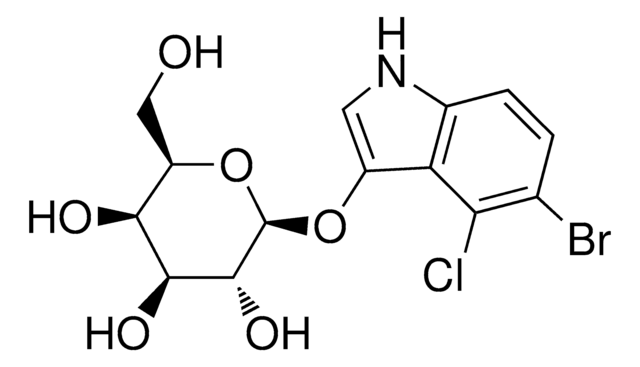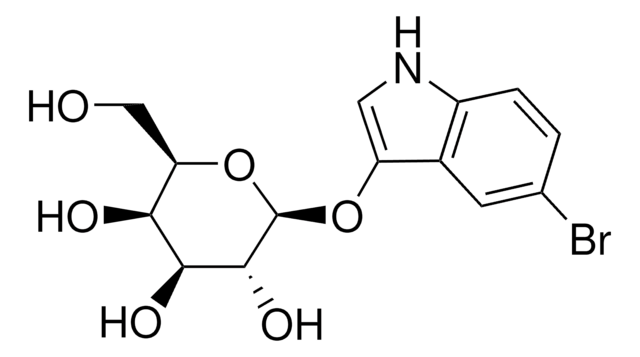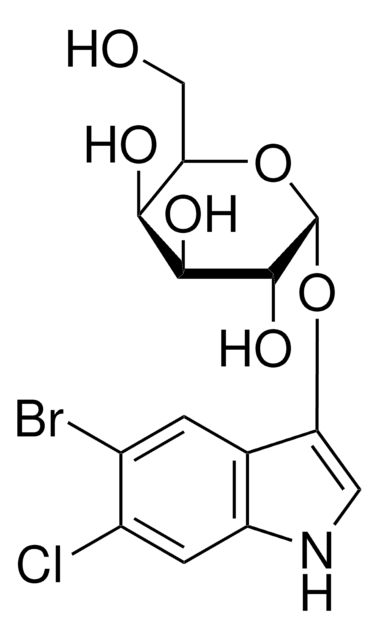B3928
Blue-White Select™ Screening Reagent
for selection of recombinant bacterial clones
Sinónimos:
Blue-White Reagent, Screening Reagent, Selection Reagent
About This Item
Productos recomendados
grado
for molecular biology
Nivel de calidad
Formulario
liquid
uso
sufficient for 125 dishes (90 mm)
técnicas
nucleic acid detection: suitable
idoneidad
suitable for nucleic acid staining
Condiciones de envío
dry ice
temp. de almacenamiento
−20°C
Descripción general
Características y beneficios
- Intense color contrast for easy colony selection
- Convenient, ready-to-use solution
Componentes
40 mg/mL X-Gal
(prepared in DMSO)
Principio
The technique is based on vectors such as the pUC and the M13mp series that carry a fragment of the β-galactosidase gene encoding an a-fragment of β-galactosidase. Exploitation of these vectors requires use of a bacteria strain carrying the complementing gene fragment to allow the assembly of an active complex, resulting in the formation of blue colonies. Disruption of the ß-galactosidase gene by insertion of a DNA fragment into the vector′s multiple cloning site results in the loss of functional β-galactosidase activity; these colonies remain white, allowing for easy differentiation between lac+ and lac- colonies.
Información legal
Producto relacionado
Código de clase de almacenamiento
10 - Combustible liquids
Clase de riesgo para el agua (WGK)
WGK 3
Punto de inflamabilidad (°F)
188.6 °F
Punto de inflamabilidad (°C)
87 °C
Equipo de protección personal
Eyeshields, Gloves, type ABEK (EN14387) respirator filter
Elija entre una de las versiones más recientes:
¿Ya tiene este producto?
Encuentre la documentación para los productos que ha comprado recientemente en la Biblioteca de documentos.
Protocolos
Blue/white color selection is a routine technique employed by molecular biologists. This technique simplifies the differentiation between colonies/plaques that contain a cloning vector without an insert and those that contain a vector harboring an insert of interest.
Nuestro equipo de científicos tiene experiencia en todas las áreas de investigación: Ciencias de la vida, Ciencia de los materiales, Síntesis química, Cromatografía, Analítica y muchas otras.
Póngase en contacto con el Servicio técnico





